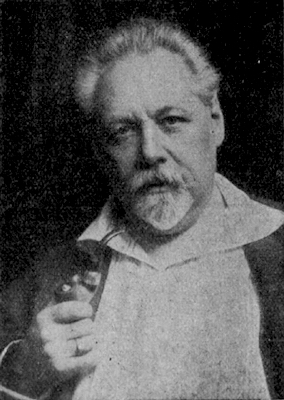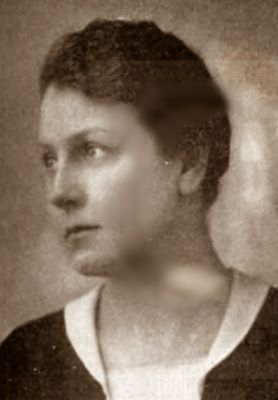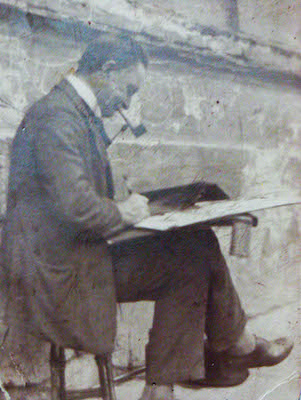Budapest & Lake Balaton
(1850 - 1980)
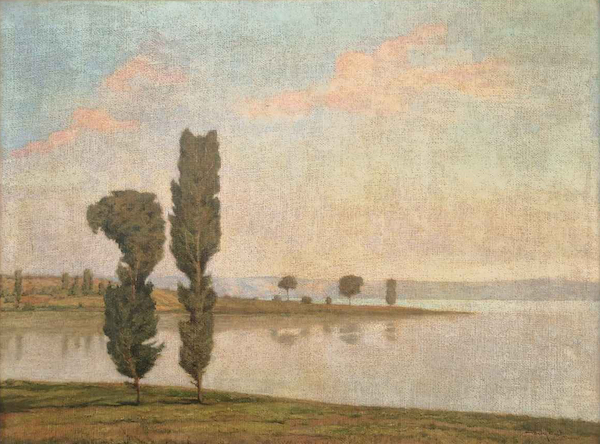
About
Budapest & Balaton in Hungarian fine arts
Even before the invention of the camera, images were an important source of learning about the past. They excellently illustrate the changes in landscapes and cityscapes, the development of artistic and technical literacy, the evolution of lifestyles, clothing, and housing culture. Painters have always liked to paint picturesque, historical landscapes and cities.
The Painters of Lake Balaton
The magical beauty of Lake Balaton and the historical past of its surroundings first inspired our poets and writers to create, for more than two and a half centuries now. The poet of the Age of Enlightenment, the song collector Ádám Pálóczy Horváth, the first poet of Lake Balaton, gave the lake the proud name "Hungarian Sea".
In the first half of the 19th century, during the development of our national painting, when our fine arts could hardly compete with the growth of our literature, the first draftsmen of Balaton appeared. In their descriptive, narrative drawings, fine steel engravings and lithographs, they depicted the surroundings of the lake, primarily the castle ruins. Due to the precise detailing of one or the other, it can almost be considered a "document of local history". The traveling painters, who were looking for interesting motifs, paid attention to the castles around Lake Balaton, mainly following the regae of Sándor Kisfaludy. They probably also expected that the already sung about castle ruins their painted pictures will soon find their way to the hearts of the audience (András Petrich, Johann Martin Schömer).
Next to the castles, Füred was understandably the most common depiction during the reform era and in the fifties of the century, since Füred is the center, the attractive scene of the ever-developing spa life. The first Anna ball was organized here, in honor of the daughter of Miss Horváth House. Miklós Wesselényi, the later flood boatman, swam here for the first time across Lake Balaton, from Füred to Tihany. The beautiful buildings of Füred, the "sour water promenade", the characteristics of spa life can be found not only in the naively lovely stone drawings of Miklós Szerelmey's Balaton Album, but also in the works of our most famous veduta painters in the fifties of the century (Károly Libay, Rudolf Alt, Miklós Szerelmey).
In the middle of the 19th century, during the development of our romantic landscape painting - after many fine line drawings, light watercolors, lithographs and engravings - the first large-scale Balaton landscape was born by Sándor Brodszky: Storm on the Balaton, a large-scale oil painting exhibited in 1851 by the At the Art Association exhibition. Brodszky remained a loyal admirer of Lake Balaton until the end of his life, in his pictures with a heroic tone, sometimes pathetically, but always with a richness of emotion, he testifies about the lake's charm.
During the flourishing of our historical painting, in the 1850s and 1860s, the depiction of domestic landscapes, regions and castles permeated with the air of our historical past played a big role in keeping the national spirit awake, and in reviving hope for a better future, and its importance even grew stronger with the development of our romantic landscape painting. In this regard, the Balaton themed landscapes are also particularly interesting. One of Antal Ligeti's most mature and excellent works is Balaton-themed: The Balaton with the ruins of Szigliget Castle, painted in 1870 for the Kisfaludy Hall of the Hungarian Academy of Sciences, in which the Szigliget Bay can be seen most beautifully from the "Szépkilátó" in Györök. József Molnár chose Balaton as his subject already in his old age. For more than a decade from 1884, he faithfully painted and featured his Balaton pictures in the Műcsarnok exhibitions. For many decades, Károly Telepy painted a thousand varieties of nature, mountainous or waterside landscapes, and a rich series of the Balaton region. In the depiction of the castles around Balaton (Szigliget, Sümeg), which he painted at the end of the 1890s, not only gave a romantic view of the landscape, but also strove for a faithful drawing of the architecture; there is no trace of the kind of misty picturesqueness in them, as in some of his other Balaton pictures, where there are almost plein airs, atmospheric effects. Miksa Reissmann Károly already belonged to the younger generation, but his perception he connected it with our romantic landscape painters. His landscape painting shows similarities mainly with the works of Antal Ligeti. They both have one thing in common in their art: the theme of their travels to the East, the endless trouble of elaboration, the smooth, meticulous presentation.
In the second half of the 19th century, the true painter of Balaton was Géza Mészöly, whose art marked the birth of realistic Hungarian landscape painting. He discovered the hidden, unknown beauties of Lake Balaton: a painter with a gentle voice of thousands of details of the lake and the life of the poor fishermen living on its shores, fishing farms, reed beds, and wild birds. Mészöly is the painter-poet of the Hungarian sea, the most outstanding Hungarian representative of paysage intime, intimate landscape depiction. In some places, he also felt the steam of the water's edge, in other places, he painted the women washing on the edge of the shore, the figures loitering on the fishing farms with the diffused light of the lighting, which softens it to gray (Balatoni fishing farm; On the shores of Balaton, Washing women).
In our painting, the reawakening of realism, outdoor painting, was enriched by a whole army of "new believers" following Mészöly's work. At the turn of the century, with plein air painting becoming popular in our country, a large number of our painters discovered the Balaton region again and again. Lajos Deák-Ébner painted the still uncivilized life of the fishermen and the reedy coast from Kenese in the beginning of the 1890s. .At that time, a whole small colony painted together in Kenese, all good friends: Lajos Deák-Ébner, Gyula Aggházy, Róbert Nádler, and the excellent architect and painter Albert Schikedanz. Aggházy painted naturalistic landscapes, Róbert Nádler immortalized the ever-changing mirror of Lake Balaton not only in his oil paintings, but mainly in his watercolors painted quickly and with a sure brush. János Valentiny also appeared in the last decades of the last century with his pictures on the Balaton theme in the exhibitions of the Műcsarnok.
The great pioneer of Hungarian plein air painting, Pál Szinyei Merse, was enchanted by the beauty of Lake Balaton in his old age. Between 1916 and 1917, the ailing artist spent a few weeks on the coast of Fonyód, where he refreshed his health and painted around ten pictures. His painting "Balaton from the Fonyód Shore" with a cheerful mood and light color scale was also created at this time. Izsák Perimutter, one of the famous Hungarian representatives of Impressionism, also visited Lake Balaton several times, and painted his loosely picturesque, delicately colored picture "Women washing on the shores of Lake Balaton" in Berény.
In the first decades of the 20th century, József Rippl-Rónai already painted the Balaton and the everyday life of Siófok in pastel as a celebrated painter. In the best of his Balaton pictures, János Vaszary did not depict the liveliness and colorful cavalcade of spa life, but rather the hard work of fishermen in his powerful, energetic sketches. In 1926, he received the only monumental commission of his life, to create a mural for the Institute of Biology in Tihany. According to the wishes of the institution, he painted the underwater life, fauna and flora of Balaton in his large panneau like a large aquarium. More exciting, however, are his monumentally demanding watercolors and oil paintings, which he painted no longer according to the client, but according to his own ideas. Béla Iványi Grünwald returned to Somogy in the summer in the early twenties, and spent a few months every year in his summer cottage in Lelle until his death. A valuable cycle of his oeuvre was born from his Balaton experiences. The yellow-walled studio in Lelle, hidden in a large garden, is the subject of many of his paintings, but mostly the water of the lake, in thunderstorms, in sunshine, in a flood of flickering light, suggest his painterly visions. After a long stay in Paris, István Csók settled at home, and from the mid-1910s he regularly spent time with his family in Balatonaliga during the summers. These Balaton months are a very fertile period for his art. One of his most beautiful and characteristic creations was also created here: The Godfather's Breakfast. In his Balaton landscapes, he not only painted the calm mirror of the lake, he also captured the sky with storm clouds, the cresting waves bursting with colors, and the rainbow-curved Lake Balaton. Lajos Kunffy was also a native of the Somogy coast. The subject of his painting was village life and the landscape of Somogy. He mostly went to Lelle from Somogytúr to Lake Balaton. In the 1920s, Lipót Hermann painted his natural pictures of the Lake Balaton.
József Egry, an outstanding master of 20th century Hungarian painting with an original tone and dramatic power, was most closely associated with the depiction of Lake Balaton. With the exception of the works of his youth, his entire work was connected to Lake Balaton. He found the meaning of his art and his entire creative life in Keszthely and Badacsony. He did not consider the meticulous repetition of the natural scene to be the goal of his painting, but wanted to express the steam, the air, the atmosphere that absorbs everything and trembles with wonderful reflexes. He shaped the landscape, the people, the cows standing in the water, by simplifying the structure, only by indicating outlines, with expressive power. He painted his pictures with a specific, self-experimented oil-pastel technique, first applying the oil paint thinly on drawing paper, then continuing and finishing it with pastel, which is neither ashy nor greasy, but sometimes translucent or colored when illuminated with its reflexes. He had a glass plate on his table, he mixed the paint on it, he liked to work with an old, slightly worn brush.
There is no doubt that under the influence of Egry's luminous painting, the wonderful interplay of sun and water became the main theme of modern Balaton painting. The role of Lake Balaton grew more and more in recent Hungarian painting: what at first was only a departure from our other types of landscape painting in the choice of subject matter, from the thirties and forties it became "Balatonian" in the nature of our natural experiences and in its specific painterly problems. was also helped by the so-called Balaton scholarships established by for him, from the lavish picturesque possibilities of the Balaton area, which corresponded to his own artistic perception and individuality.
The few months spent in Siófok and Tihany were very productive for István Cserepes. The bold watercolors of Jenő Szabados, who died young in World War II, were born in Tihany. Imre Szobotka painted some of his optically fresh pictures in the bay of Tomaj and in Badacsony, which impress with their clean, bright colors and balanced calmness. The young Gyula Hincz combined Cubist form with Expressionist expressive power in his large-scale Badacsony landscape. János Halápy, loyal to Füred, tried to capture the vibrations of light and air, and for almost five decades he painted the smooth mirror of the lake adorned with sailboats or the stormy ripples in every season. He also maintained a studio in Buda and Füred from the 1930s. His technique, reminiscent of the pointillists, applied colors in small spots and lines: pinks, pale purples, light blue-green shades. Elemér Vass spent the last productive decade of his life in Tihany, whose lyrical paintings captured not only the ripples and color poetry of Balaton, but also the diversity of its still lifes. He mostly painted on paper, alla prima without priming, he used only oil paint, usually diluted - so some of his paintings look like watercolors or gouache. With this technique, he achieved the lightness, fresh, fresh effect that characterizes this era of his art. His painting is loose, but the logic of the structure is always felt behind the clean colors laid loosely next to each other. Endre Fenyő A.was a chronicler of the Szepezd coast, he painted a rich series of Balaton pictures with dramatic power, jagged brushwork, and deep colors in the 1950s and 1960s.
Although a permanently functioning artist colony has not been established on the shores of Lake Balaton since the liberation, most of our 20th century artists visited its beautiful landscapes, some of whom could spend longer periods of time in their summer cottages or studios. The lake's sumptuous panorama, busy life, and ever-changing light and color effects also inspired István Boldizsár, our old master who continues the best traditions of Nagybánya art. His painting, always inspired by nature, was enriched with new insights at Lake Balaton. In the colorful series of his pictures of Siófoki, Földvár, Tihany or Zánka created in the sixties, the contrast of the deep blue sky and grey-white, angry waves, the sparkling play of sunlight on the azure water and the sparkling whiteness of the sailboats in the distance are captured. He paints the rich impressions of the landscape with pleasure and cheerful joy.
Since the 1930s, Sándor Basilides has been painting his pictures of Balatonalmád almost without interruption: the foggy, humid water surface, the park, the small village built on the hillside of Vöröberény with its listed churches, the bay of Fűzfő, the surging waves of the stormy lake. Gizella Barabás tirelessly visited Lake Balaton for decades and created her naturalistic, serene color pictures. In the pictures of Pál Nyerges, the Káptalan coast, the vine-covered slopes of Öreghegy in Almádi and summer houses are visible. László Bényi painted the landscape around his summer house in Csopak with his characteristic bright red, yellow, and green dynamic color contrasts, pastiche. Jenő Gulyás was also a lover of Csopak, he painted most of his oeuvre here. István Csebi Pogány captures the veiled silver vapors of the water surface, the sunny fruit-bearing slopes of the Arács and Füred mountains, and the brownish-red colors of autumn plowing in Arács in his finely toned watercolors. József Csáki Maronyák is also one of the best connoisseurs of the Balaton region. In Tihany, he paints the violet dawns of the lake, the silver bridge in the moonlight, the tender green of the newly sprouting spring reeds, the brown-yellow-red splendor of autumn, the life of fishermen.
László Bartha's art actually matured at Lake Balaton. He lived in Tihany for a decade, and from his studio in the Abbey's museum building, he had a unique view of Balaton. As the subject of his paintings, he often chose the mirror of frozen water, which is beautiful even in the harshness of winter, or figures cutting ice and carrying ice at the Belső-tó in Tihany. Lajos Szentiványi preserves the view of the press houses, vintages, and blooming almond trees in the Balaton area in his fresh, loosely picturesque pictures. Gyula Mikus lived permanently in Keszthely, and captured the world of the lake, the silvery lights of melting, the mature color moods of Lake Balaton at the end of summer in many apt aspects. In addition to Gyula Takáts' poems, he testified about the people and miracles of Lake Balaton in his colorful pencil and chalk drawings. Erzsébet Udvardi settled in Badacsony, and her lyrical Balaton pictures capture the viewer's longing for gentle beauty and purity.
Budapest in Pictures
The cityscapes (veduta), which were commissioned by the clients for the sake of the historically significant buildings visible on it, or simply because of the interest, beauty, and fame of the view, has been a popular genre since the beginning of the 18th century. Pest and Buda at the time of the reform period were still relatively modest cities: the latter did not yet have enough historical buildings, and Pest, which was being built at a faster pace, seemed too modern and decidedly unscenic. The most beautiful vedutas were painted by Rudolf Alt (who visited Pest-Buda several times in the 1840s) and Miklós Barabás. In 1843, Barabás made several watercolors of the Danube bank in Pest.
After the Agreement (1867), the fever for nationalism that was still characteristic of the 1950s and early 1960s subsided in Hungary. Interest turned from the past to the present. The leading individuals of the Deák generation now devoted all their energy to the modernization of the country and the capital. There is an enormous literature on the classical era of Budapest's urban development, during which the three united small towns (Pest, Óbuda and Buda) became a modern metropolis. Haussmann's urban reform of Paris and the construction of the Ringstrasse in Vienna both served as a model for the development of Budapest and defined urban planning concepts for decades. Thus, cityscape painting reached a crisis in the following decades.
The type of new cityscape was born in Paris and closely followed the modernization of the city. One of the main themes of the French Impressionists was metropolitan life, new boulevards, train stations, and new entertainment venues.
In Hungary in the 1970s, the greatest talents of the not-so-populous group of painters worked on monumental state commissions, performing the current but traditional tasks of historical and portrait painting. The world of emotions and thoughts of the Hungarian masters was largely shaped by the Munich school of realist genre painting, or by the landscape painting tradition there, which left out the development of visual sensitivity to modern, urban, and urban themes. The veduta painting tradition was not a Munich specialty, and especially not the discovery of the picturesqueness of situations and locations created by the modern metropolis. The world of ideas and world view brought from Hungary in the 60s and 70s also bound the emotional and thought world of the painters to the rural landscape. After settling back home, they continued to look for their painting subject in rural Hungary, not in the bustling, excessively new and prosaic Budapest.
The aldermen tried to take care of many things, to replace what should have developed spontaneously during a slow, continuous development. They were also credited with creating a series of cityscapes. In 1883, the Capital Fine Arts Committee, established in 1880 alongside the Budapest City Council, took the initiative to immortalize "the capital's most beautiful spots" in oil paintings. Among the applicants received were József Molnár, Árpád Festy, Ede Balló.
In the mid-1980s, a few pictures of Budapest that can be called "modern" were created regardless of the competition. Alajos Bruck matured into a master of naturalistic painting during his long stay in Paris. His large-scale painting of the Lower Danube Bank (at Petőfi Square) made in 1885 is his early masterpiece. This location has been a favorite subject of cityscape painters since Barabás, but it has changed a lot in the meantime. Bruck also later painted cityscapes of Budapest, most of which are "market pictures" (Dísz square market, Döbrentei square market, Szentháromság square market). The location is almost secondary to them, their main theme is the whirlwind of the market, genre figures. Their pleasant, subdued colors and anecdotal details made them popular at the end of the century. Gyula Háry prefers to make watercolors of the curved streets of Tabán. His paintings depicting the New York Palace or the former National Theater are closer to the city paintings of the Impressionists. Although the built environment of the big city is only presented as a backdrop, the perception of the hustle and bustle of the big city and the functional use of public space comes to the fore.
Hungarian plein air painters of the turn of the century were not influenced by Budapest. They paint landscapes and villages, or if sometimes a city, then a small rural town, the summer nests of artist colonies, Nagybánya, Kecskemét, Szolnok, and very rarely some sleepy, ancient rural towns such as Vác or Besztercebánya. The reasons for the lack of Budapest iconography are not to be found in the city's lack of beauty or excitement, but elsewhere, in the problematic nature of the relationship with modernity and the assumption of a Budapest identity.
Artworks in this theme
related artists
Pál Bor
(1889 - 1982)
Árpád Basch
(1873 - 1945)
Ida Hallósyné Nágel
(1898 - 1941)
János Tibai Takács
(1876 - 1943)
Béla Kamarás
(1921 - 1993)
Pál Kurtapataki Kovács
(1889 - ?)
Antal Berkes
(1874-1938)

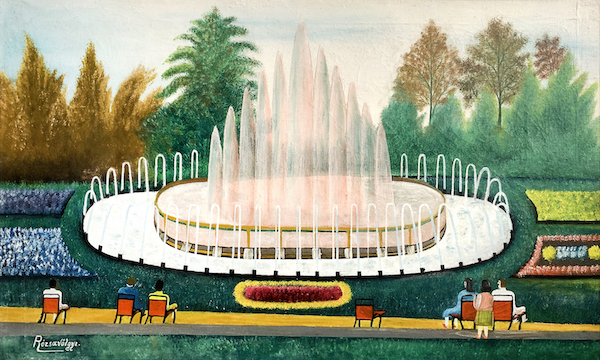
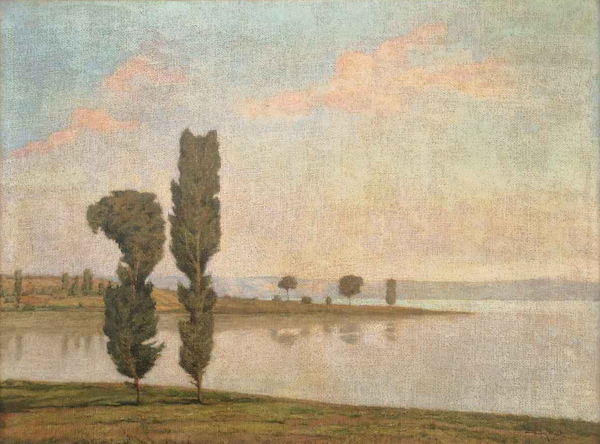
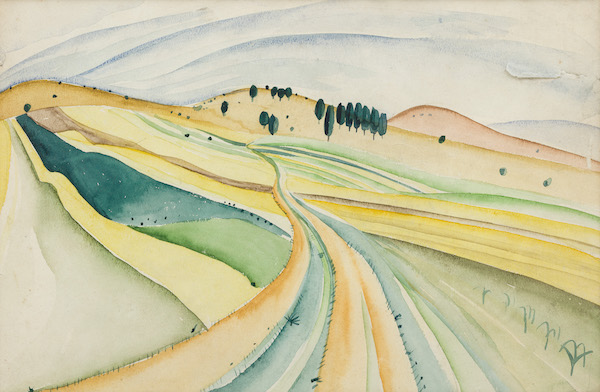
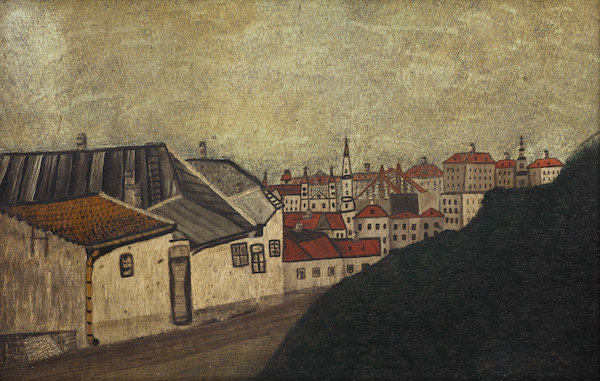
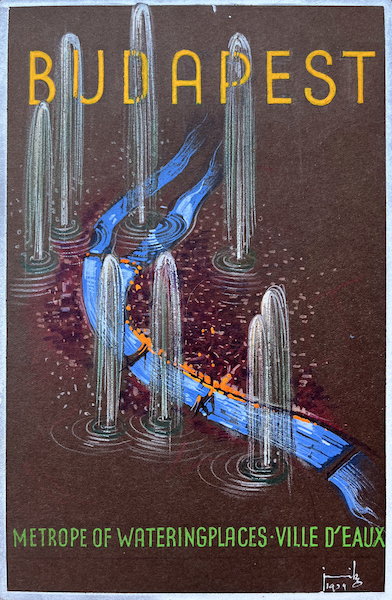
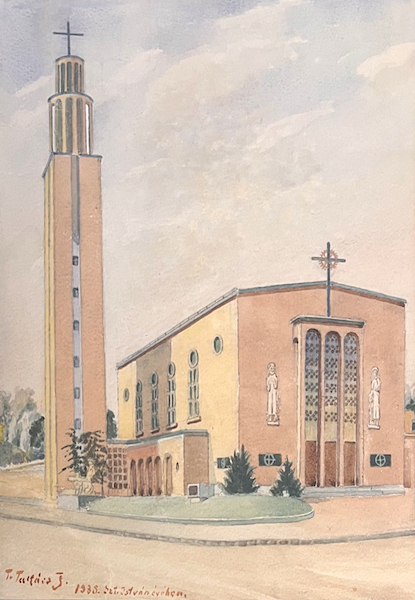
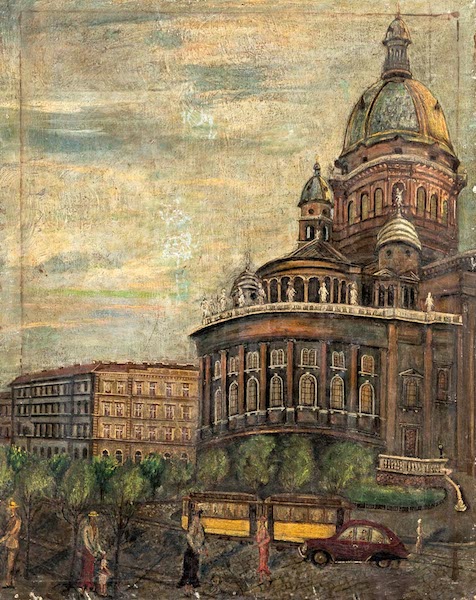
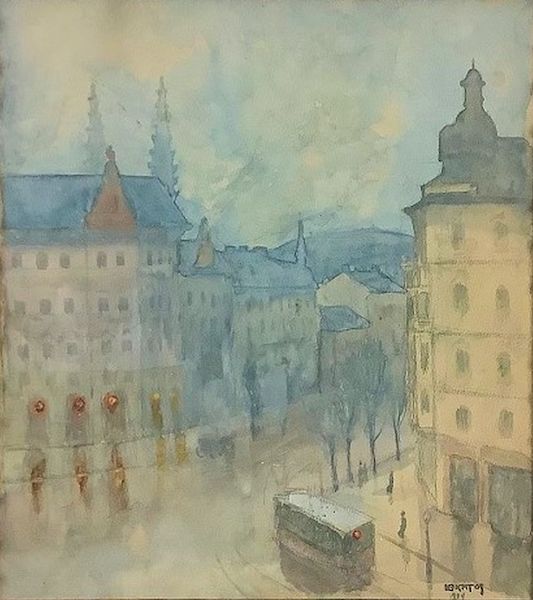
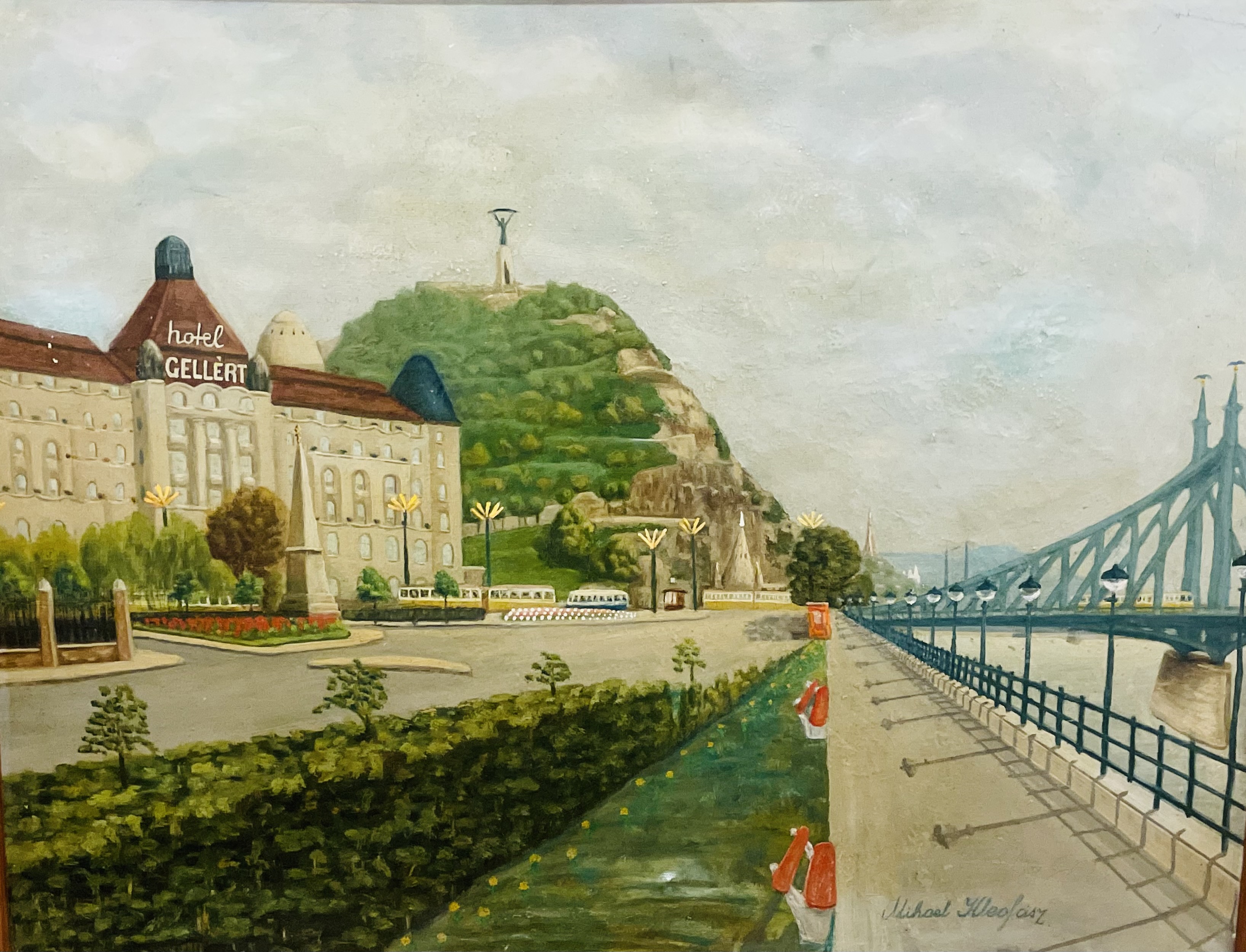
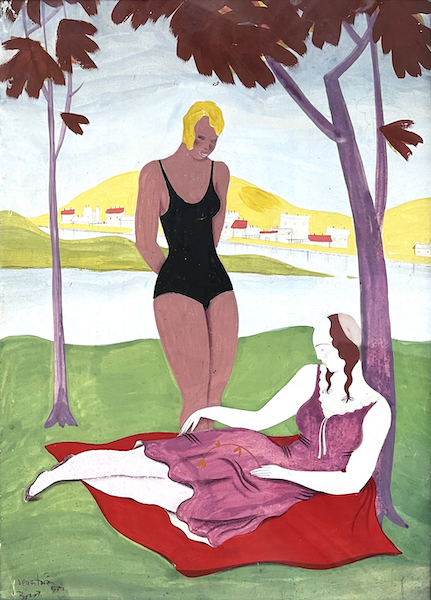
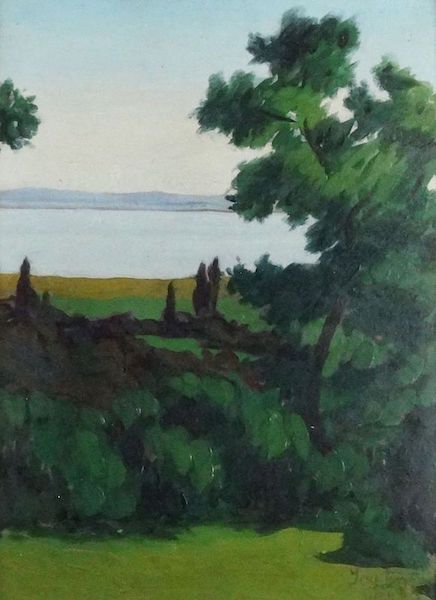.jpeg?locale=en)
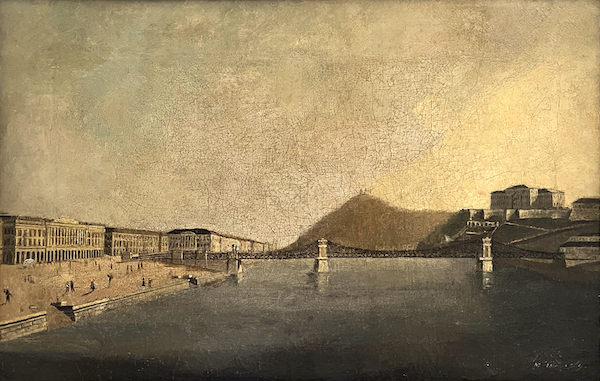
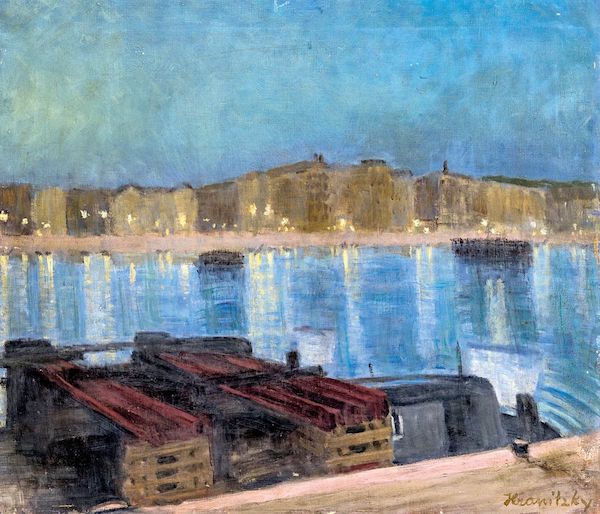
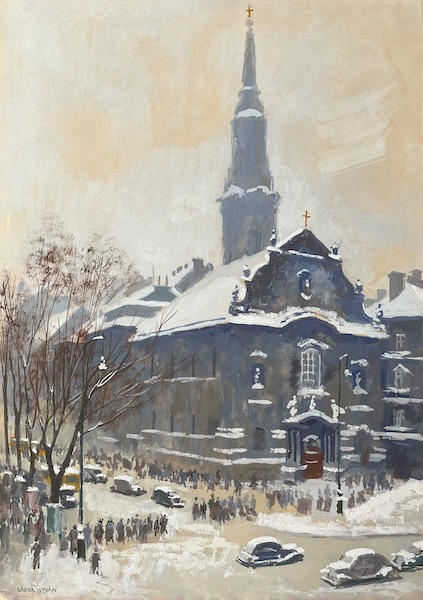
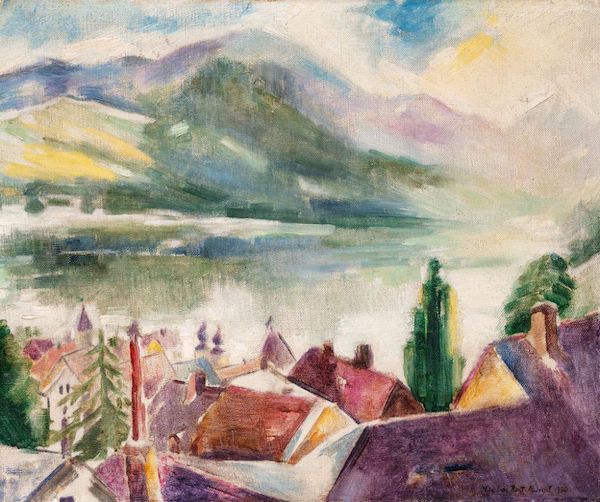
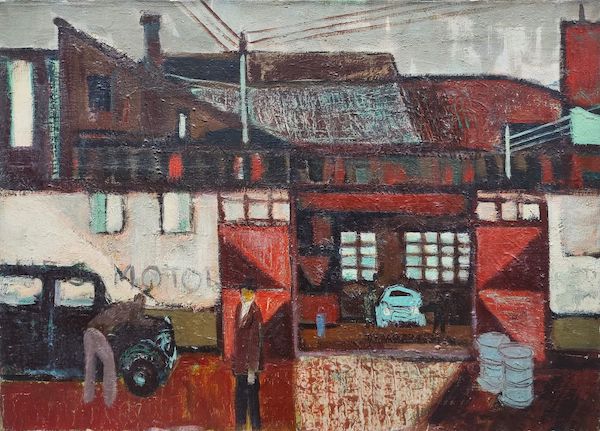
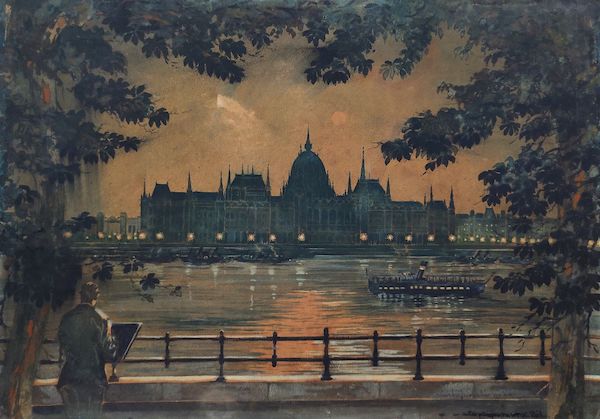
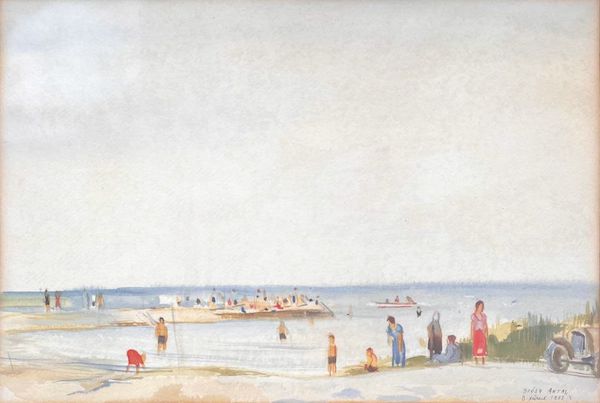
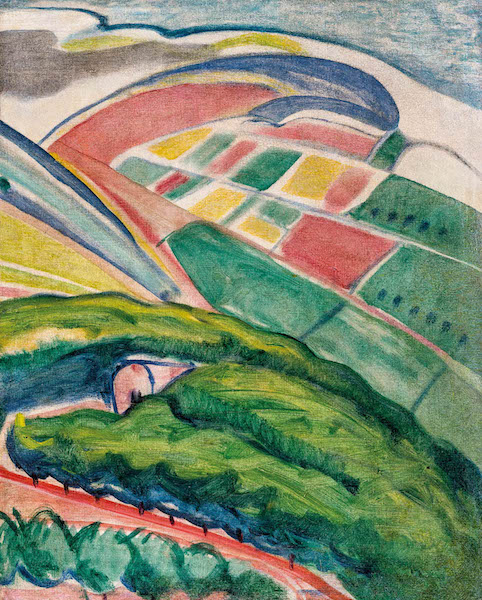
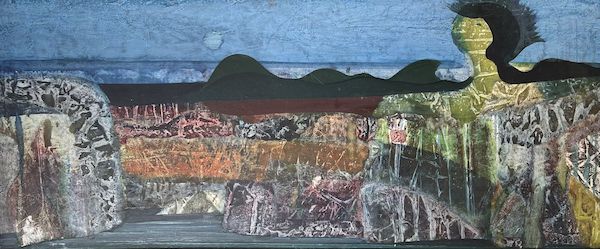
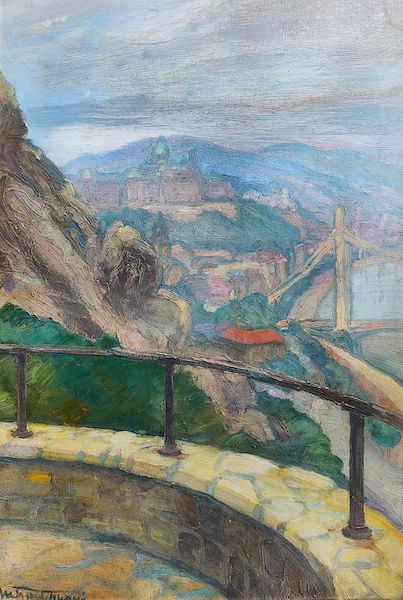
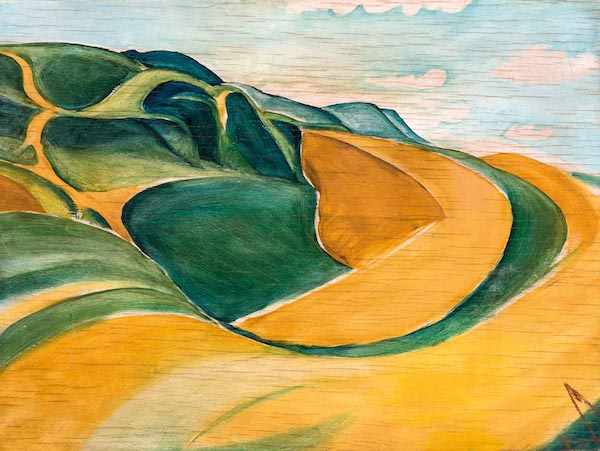
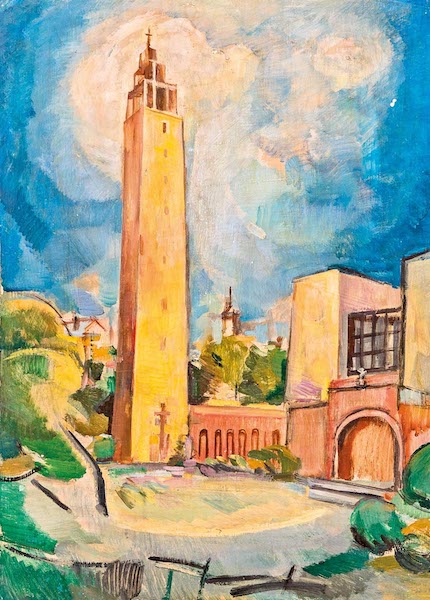
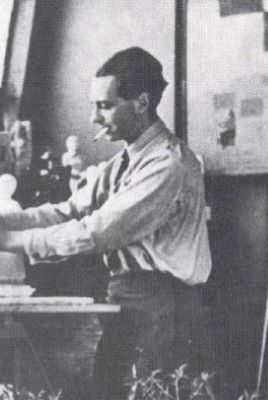.jpg?locale=en)
